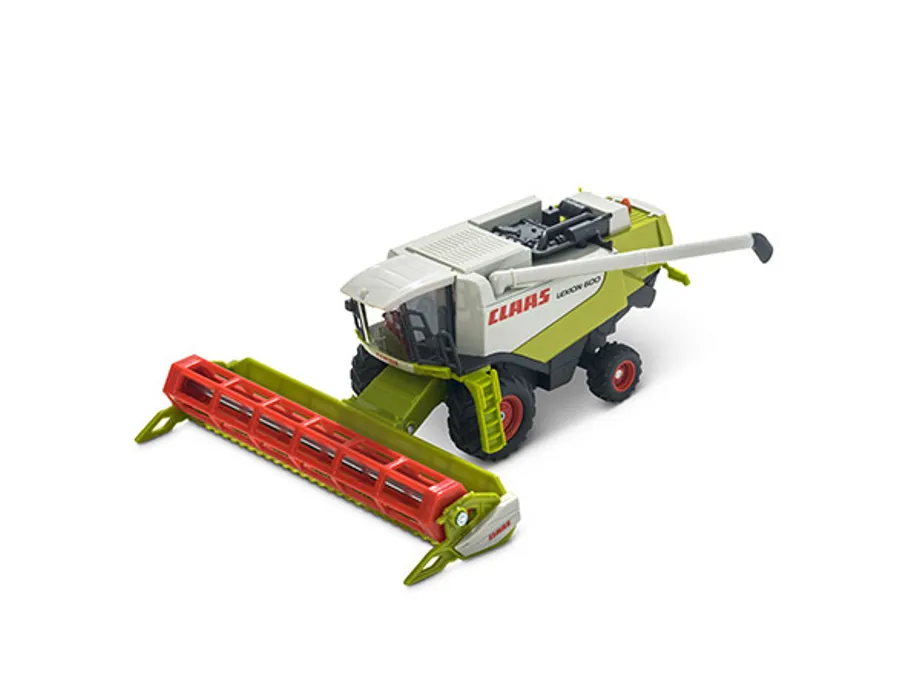
Agricultural mechanisation
Mechanised agriculture is the process of using agricultural machinery to mechanise the work of agriculture, greatly increasing farm worker productivity.
In modern times, powered machinery has replaced many jobs formerly carried out by manual labour or by working animals such as oxen and horses.
Mechanisation involves the use of an intermediate device between the power source and the work.
This intermediate device usually transforms motion, such as rotary to linear, or provides a mechanical advantage such as speed increase or decrease or leverage.
Current mechanised agriculture includes the use of tractors, trucks, combine harvesters, aeroplanes, helicopters and other vehicles.

Combine harvester model
The combine harvester (model shown here), is a machine that harvests grain crops.
The name derives from its combining three separate operations involved in harvesting (reaping, threshing and winnowing) into a single process.
The waste straw left behind on the field is the remaining dried stems and leaves of the crop, which is either used on the field or baled for feed and bedding for livestock.
The combine was invented in the USA by Hiram Moore in 1934 (early versions pulled by horses or mules).
The first commercial combine harvester was developed in 1882, by the Australian Hugh Victor McKay.
